Art in Vienna
I saw only a teeny fraction of the art to be seen. Rather than pepper my daily narratives with random art,
I'll assemble a story of my art explorations here. Let's begin with Belvedere Palace.
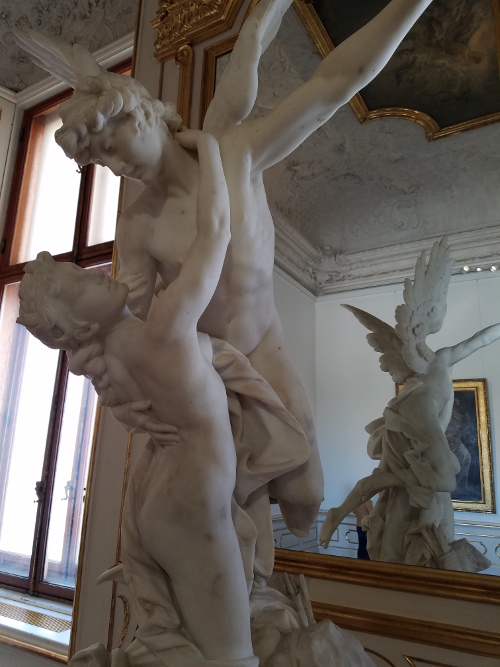
Cupid and Psyche, by Theodor Friedl, 1890.
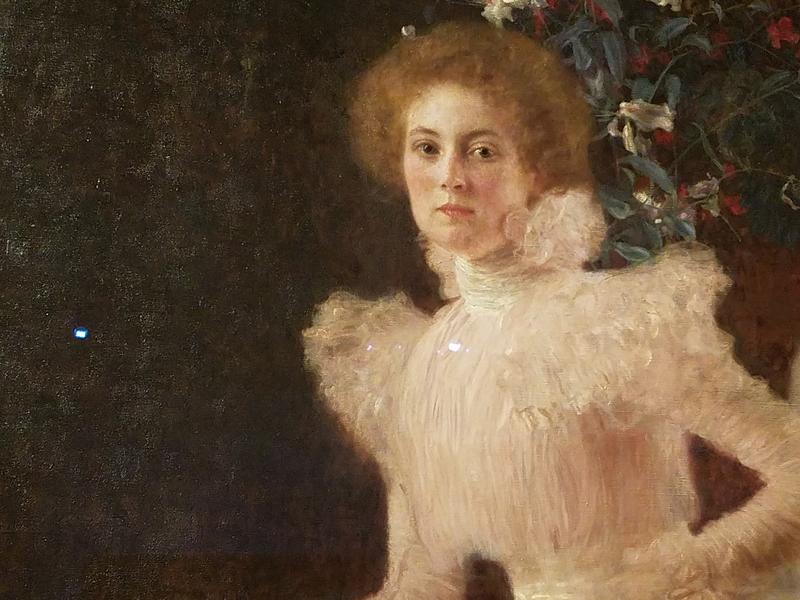
Several paintings by Gustav Klimt are a highlight of the colection. Sonja Knips (detail), Klimt,1898. Klimt was a leader in the Vienna Seccession, an art movement opposed to the art establishment of the time. This Klimt painting seemed influenced by the impressionists (who, in Paris, also rebelled against the local art establishment). However, to my eye the realism of the face deviates from impressionism.
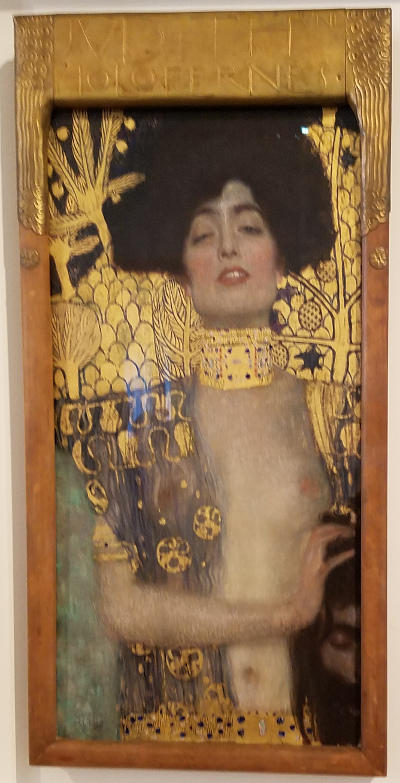
Judith, by Klimt, 1901. An early example of Klimt's "golden" paintings.
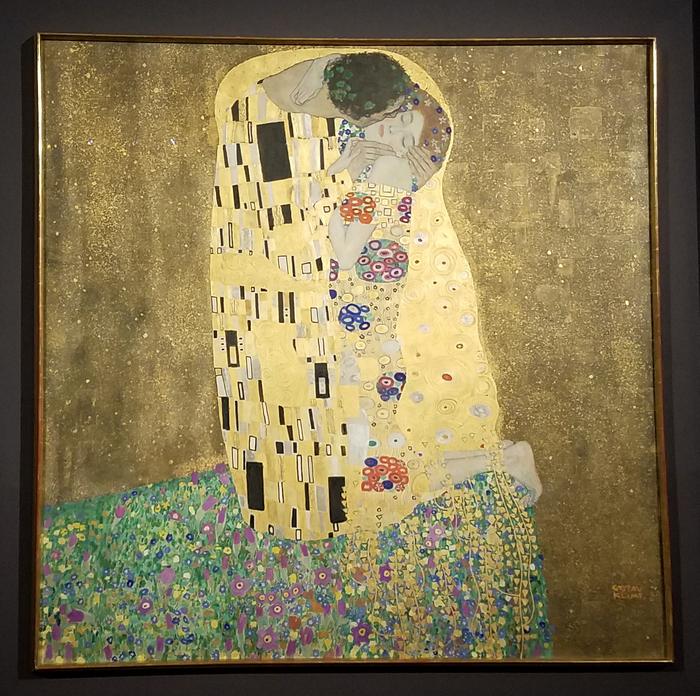
The Kiss, by Klimt, 1908, is famous.
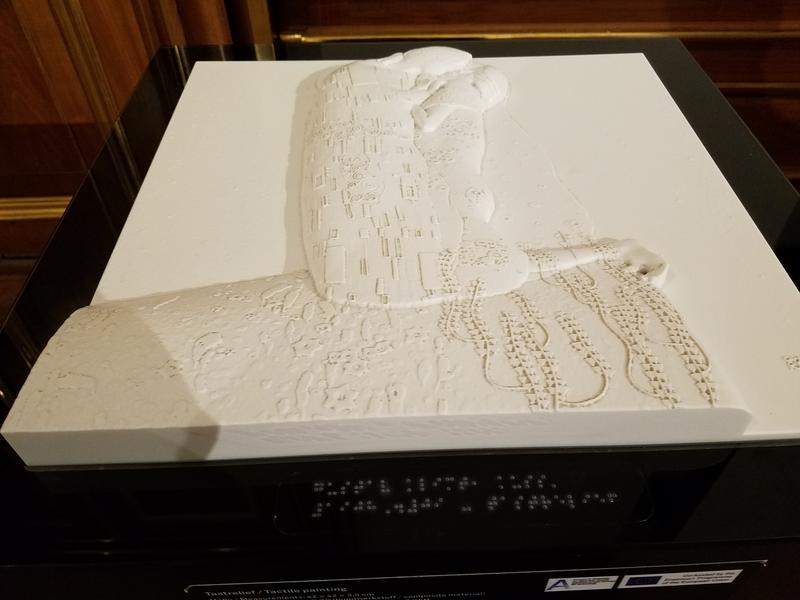
Some of the paintings were represented as reliefs that could be touched, allowing blind people to experience the paintings. This is a relief of The Kiss, by Klimt, 1908.
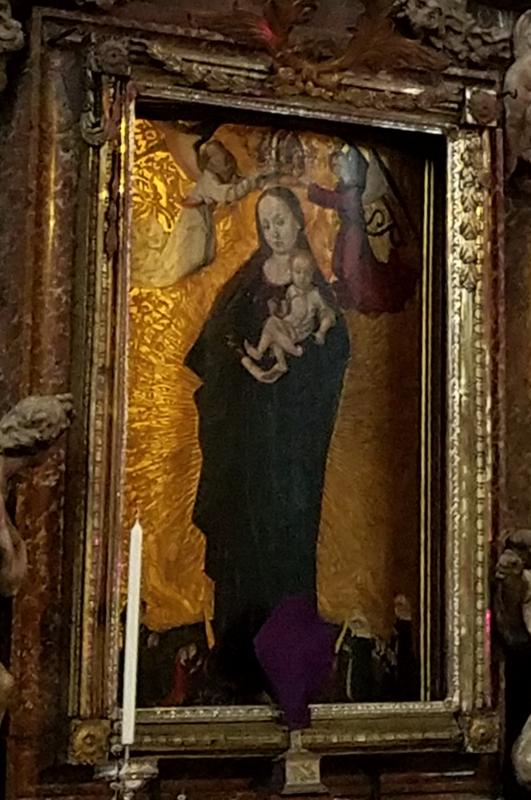
A week later I took this photo of a Catholic icon painting in St Stephens. When seeing these artworks, I formed the hypothesis that his imitation of a religious art form helped make Klimt the controversial artist that he was. I later read that this was not the case at all. Instead, he and the institutional patrons of art lost faith in each other. As a result, Klimt delivered commissioned paintings that were not flattering to the patrons or to the institutions, causing contoversy (and causing the major public comissions to dry up).
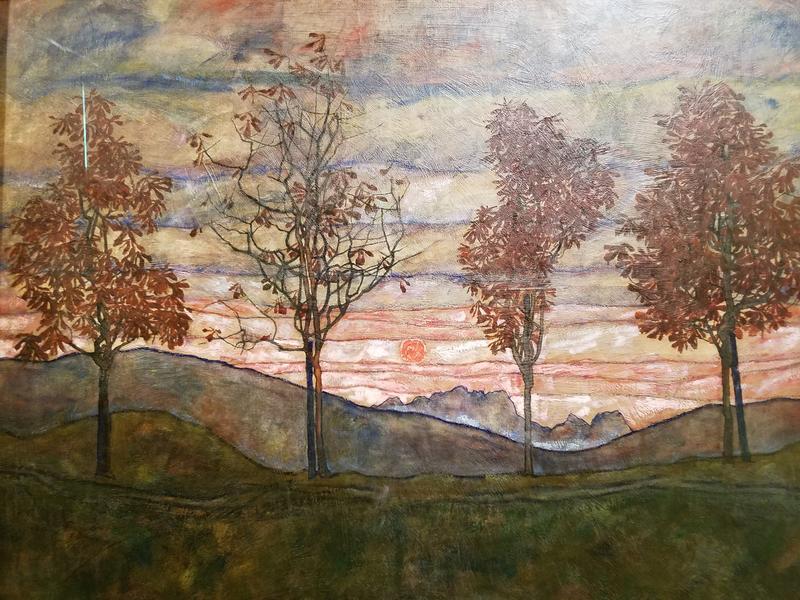
Egon Schiele was another leading light of the Secession. This is Four Trees, from 1917.
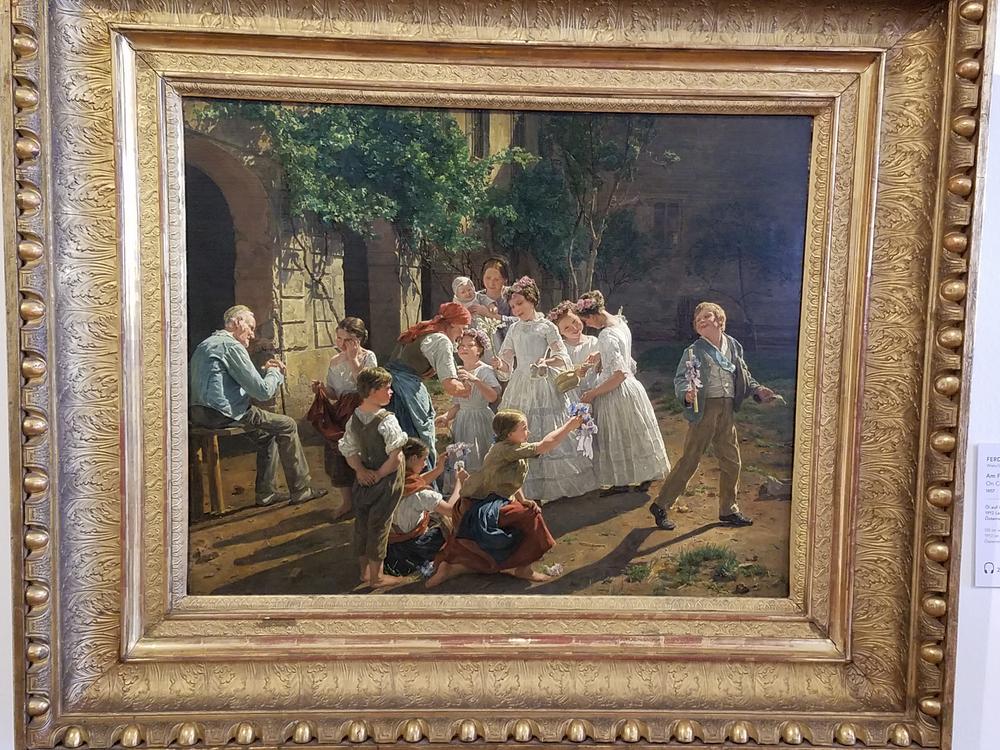
The Belvedere also presents earlier eras of Viennese art. In the mid 1800s, art became more accessible, depicting everyday life and becoming affordable for the upper middle class. Here, the people dress up for Corpus Christi. On Corpus Christi Morning, 1857, by Ferdinand Georg Waldmuller. However, some are too poor to dress properly.
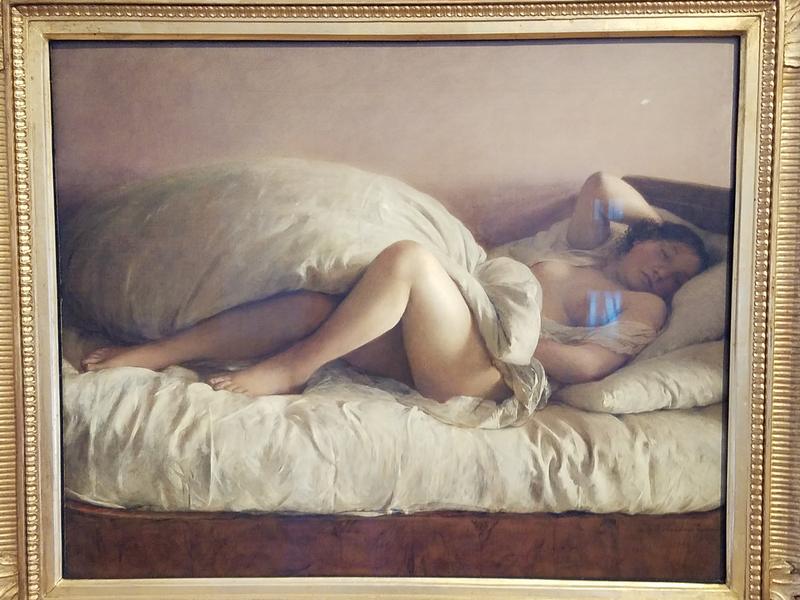
Slumbering Woman, 1849, by Johann Baptist Reiter. More accessible art (sorry for the blue splotchy light reflections). I thought this was surprisingly realistic. Anyway, this was before the internet, so high quality erotica like this was only for people who could afford to support the arts.

On Monday, I took a walking tour that included this square and its monument opposing fascism. This is only part of the monument. The small figure in front of the the white sculptures depicts a Jew, being forced to scrub a sidewalk with a brush. This was a ritual humiliation of Jews by the Viennese, encouraged by the Nazis. The artist later added barbed wire to the kneeling figure so people would stop sitting on him.
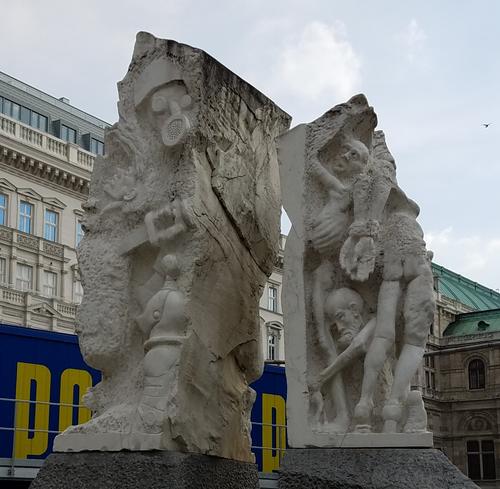
Detail. The suffering of the people, right, and of the soldiers, left.
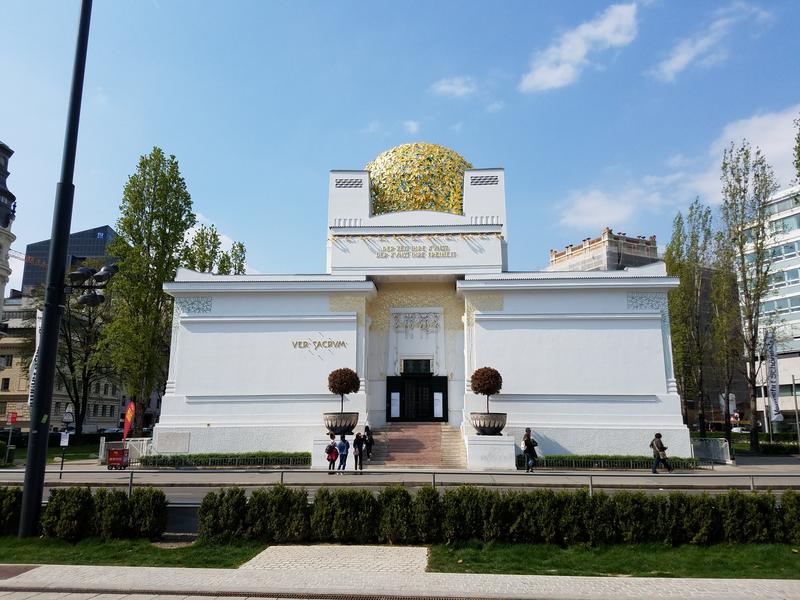
On Tuesday I visited the Secession gallery. Designed by the secessionists, the building itself is a work of art and very modern (1898).
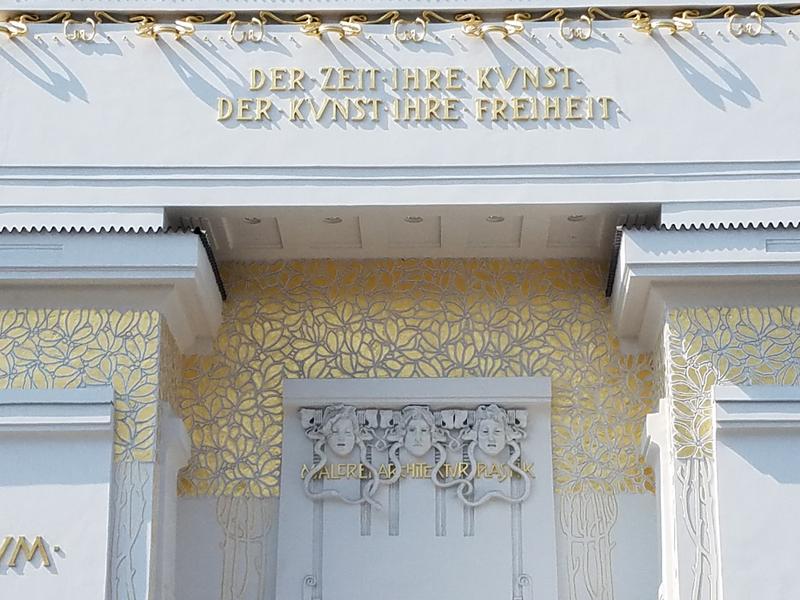
Detail. Roughly translated: The art of your time. The art of your freedom.
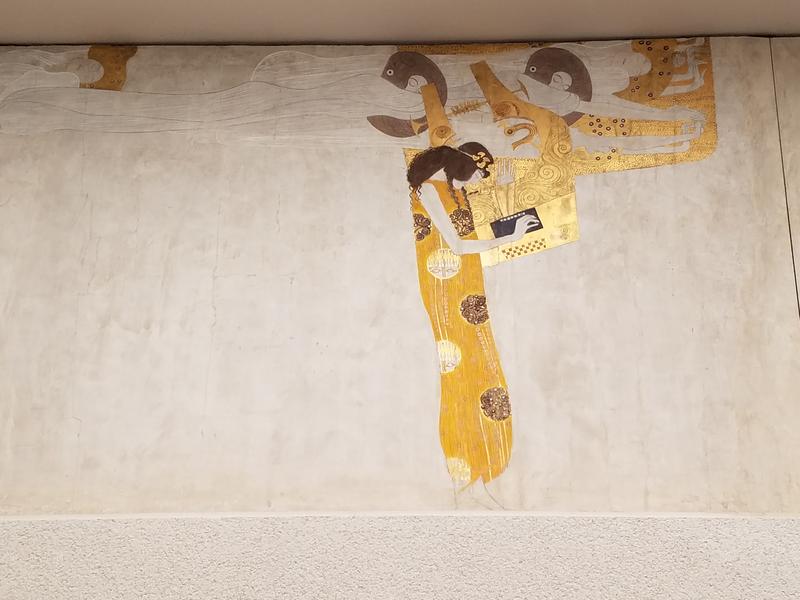
The gallery was between exhibitions, but I was still able to view the Klimt "Beethoven frieze." Created for a Secessionist exhibition of art and music. It covers the upper part of three walls of a large room. It depicts humanity's search for fulfillment (represented by the flying genies, top of image). This detail, near the end of the frieze, shows the genies ending their journey when they find art (the woman playing a lyre).
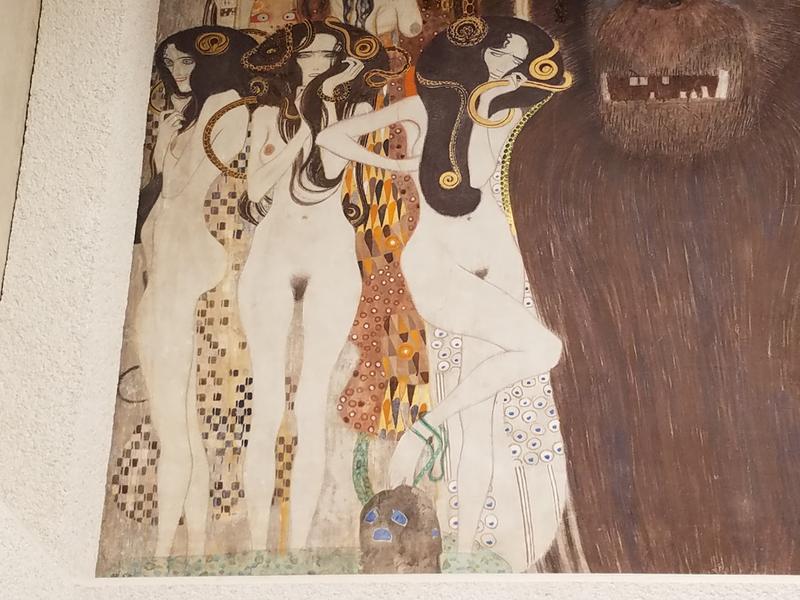
Before reaching this point humanity wastes time ambitiously fighting monsters, such as these gorgons (this is a detail from part of the frieze).
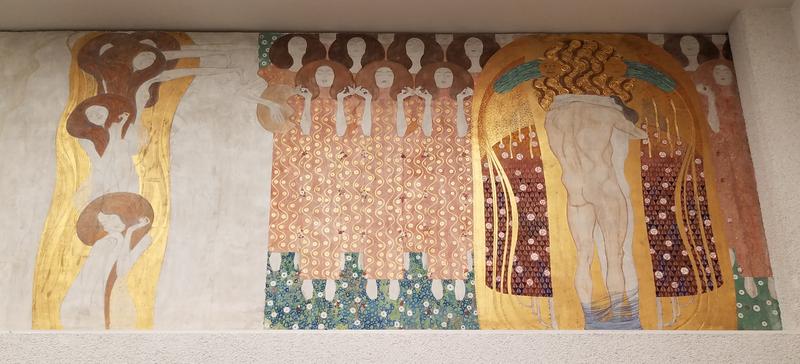
After finding the arts, the now-contented genies present to us a choir of angels (right), a reference to Beethoven's ninth symphony. The frieze was arranged with a gap between the lyre and the choir. In the original exhibition, this gap was above an archway leading to the main room of the exhibition, where a prominently-displayed statue of Beethoven was visible.
Back to
Jonathan's Page
Art in Vienna / Jonathan Krall / revised January 2020














